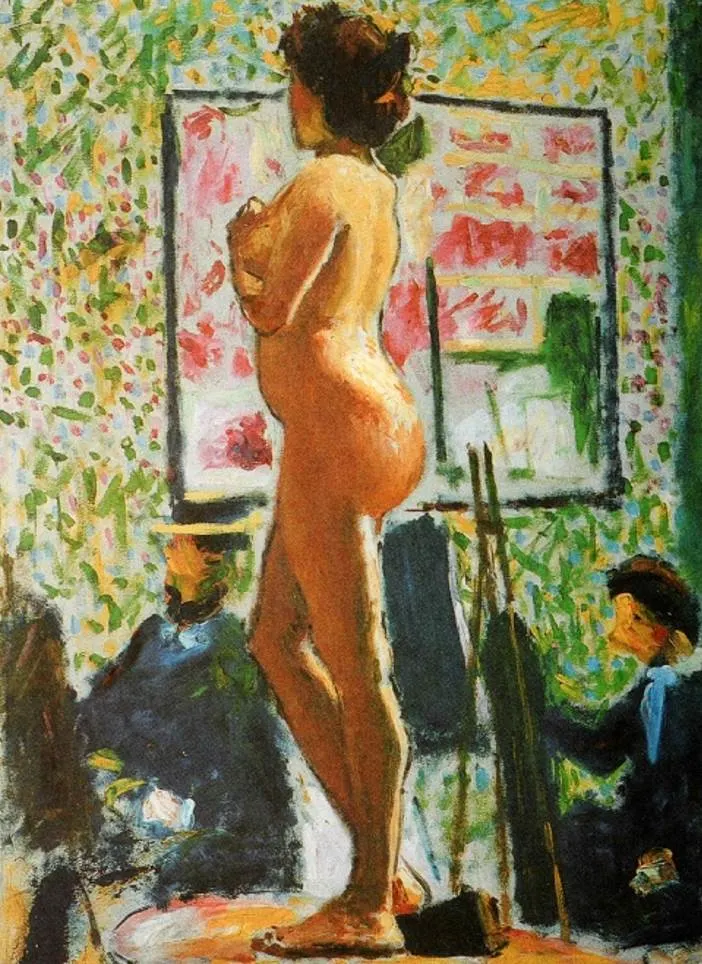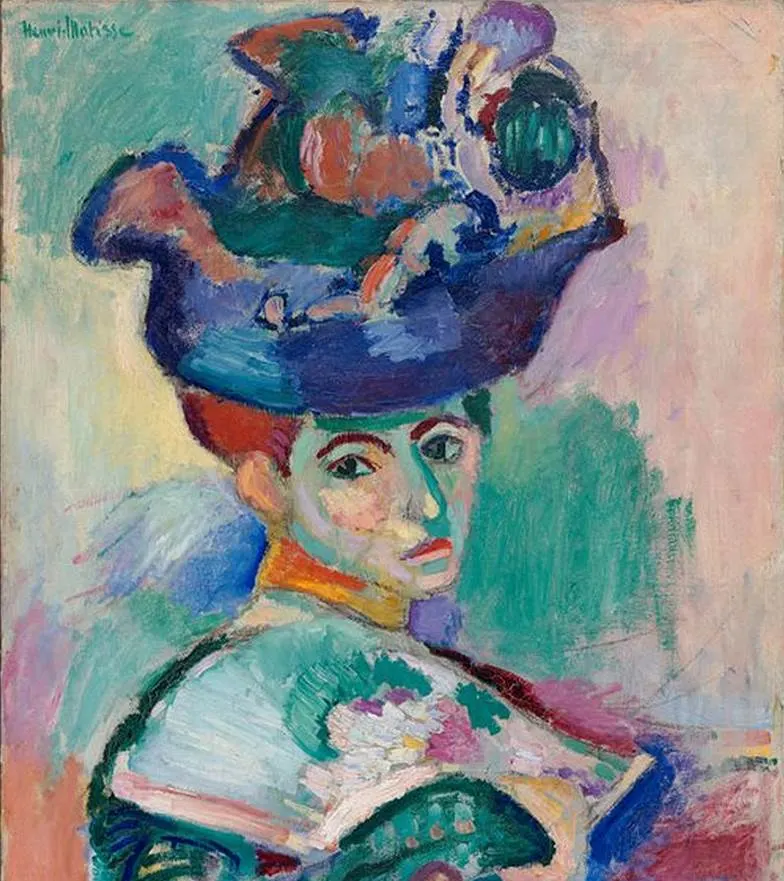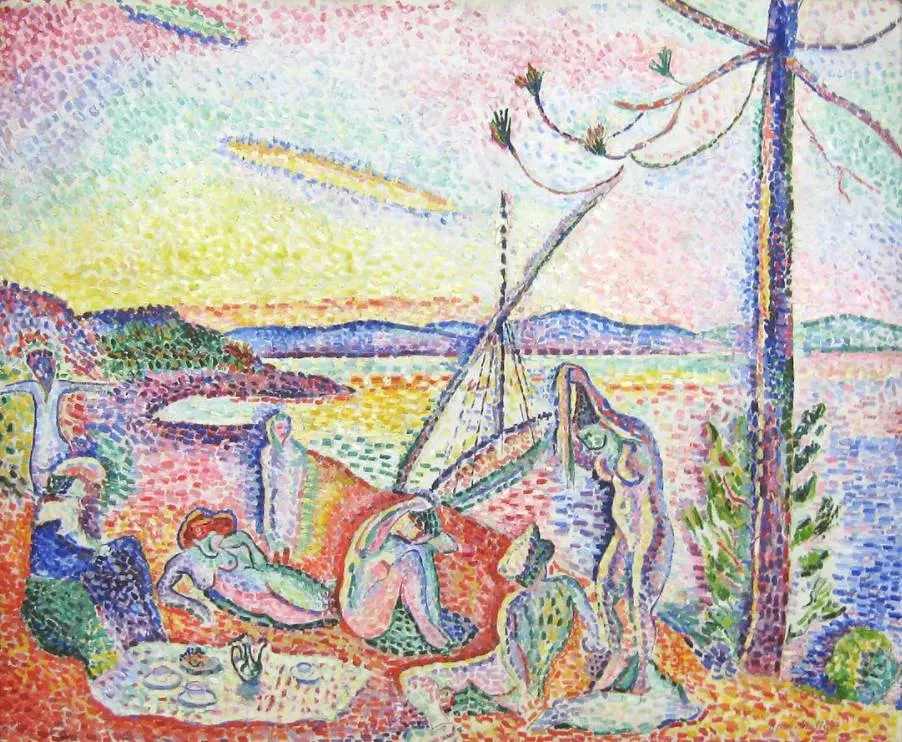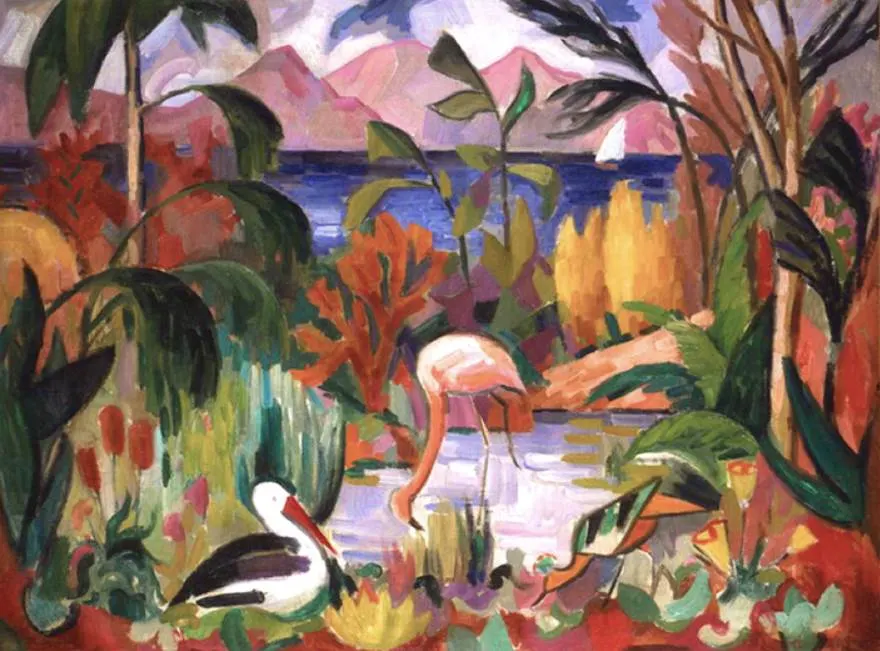When Impressionism emerged in the 1860s, it became an art movement that revolutionized the history of art indefinitely.
It sprung from the Realism movement and Impressionist artists never detached from depicting subject matter in a representative way.
This all changed in the first years of the 20th century when a group of artists radically changed everything that was deemed normal regarding color theory.
These painters are known as “Les Fauves” and in this article, you’ll discover what Fauvism art entails and how it came about.
History of Fauvism Art
The roots of Fauvism can be found in the works of Gustave Moreau (1826-1898), a controversial professor at the École des Beaux-Arts in Paris and one of the leading Symbolist artists of the 1890s.
His use of color was revolutionary and this struck a chord with many of his students, including Albert Marquet (1875-1947) and Henri Matisse (1869-1954).
Marquet is credited with painting the first paintings in history that can be classified as “Fauvism art.” It’s referred to as “Fauve Nude” and was completed in Moreau’s studio in 1898.
Although Moreau died in 1898, his teachings were a pivotal element in the development of Fauvism as an art movement.
Another important moment was Matisse’s meeting with Australian artist John Russell (1858-1930) on the island of Belle Île near the shore of Brittany in northwestern France in 1896.

His Impressionist paintings came as a shock to Matisse and although he initially dismissed the ideas, he changed his mind when he came across some paintings by Vincent van Gogh (1853-1890). He had been one of Russell’s friends.
The same thing happened to Maurice de Vlaminck (1876-1958), another early member of the Fauves who saw paintings by van Gogh for the first time in 1901. He referred to this moment by stating that he loved van Gogh more than his own father.
Henri Matisse, Albert Macquet, Maurice de Vlaminck, and André Derain are considered to be the founding fathers of Fauvism.

How did Fauvism get its name?
The movement didn’t really start until the artists first exhibited their paintings together at the Salon d’Automne in 1905.
This was a very controversial event because the colorful paintings of this group of painters weren’t appreciated by art critics.
One of them was French art critic Louis Vauxcelles (1870-1943), a man who is credited with coining the terms Fauvism in 1905 and Cubism in 1908.
Vauxcelles had referred to these particular paintings as “Donatello Chez Les Fauves” or “Donatello with the Wild Beasts.” That’s because a sculpture by Donatello was exhibited in the same room.
The name “Wild Beasts” was derived from another painting by Henri Rousseau (who was not a member of the group) titled “The Hungry Lion Throws Itself on the Antelope” (1905).

Main characteristics of Fauvism art
Although the movement itself only lasted officially between 1905 and 1908, the style had been brewing for several more years.
A key work of art in the development of Fauvism was Matisse’s painting titled “Luxe, Calme et Volupté“(1904), an idyllic scene of the Saint Tropez Harbor in southern France.
Although it was completed in the Pointillist style devised by Georges Seurat (1859-1891), it features a lot of the most important characteristics of Fauvism art such as:
- Vivid colors – Fauvism paintings are some of the most colorful paintings ever produced.
- Unrealistic colors – The idea to represent subject matter realistically was abandoned.
- Contrasting primary colors – This further emphasized the bold use of color.
- Vigorous application of paint – Some Fauvism artists applied oil paint directly to the canvas.
- Spontaneous compositions – Anything went to achieve the artistic goal.

The group only had 3 exhibitions
The core values of the movement emerged in the late 1890s and several like-minded artists produced Fauvism paintings in the first years of the 20th century.
Although the movement extended to 1910 and beyond, the group only had 3 exhibitions:
- Salon d’Automne 1905 – The first exhibition that resulted in the group’s name being coined.
- Salon des Indépendants 1906 – The first exhibition in which all members of the group exhibited together.
- Salon d’Automne 1906 – The final exhibition by the Fauvism artists in which also Paul Cézanne (1839-1906) played a major role. Cézanne died during the event on October 22, 1906).
Henri Matisse started traveling extensively in 1906 and he absorbed a lot of influences during these journeys.
He abandoned Fauvism shortly after the final exhibition but the group left a permanent mark on the world of art.

Most notable Fauvism artworks
What better way to understand the ideals of Fauvism than to check out some of the most notable Fauvims Artworks, right? Below is a brief list of some important works.
- Fauve Nude (1898) by Albert Macquet – This painting is credited as being the first Fauvism painting in history.
- Woman with a Hat (1905) Henri Matisse – The painting that sparked a storm of controversy at the first Fauvism exhibition.
- Charing Cross Bridge, London (1906) by André Derain – One of the many colorful paintings that Derain produced in London.
- Le Bonheur de Vivre (1905-1906) by Henri Matisse – Arguably one of the most influential paintings of the early 20th century.
- Colored Landscape with Aquatic Birds (1907) by Jean Metzinger – A painting completed at the end of the movement which shows signs of the emerging Cubist movement.
Do you want to discover more? Check out some of the most famous Fauvism paintings.

